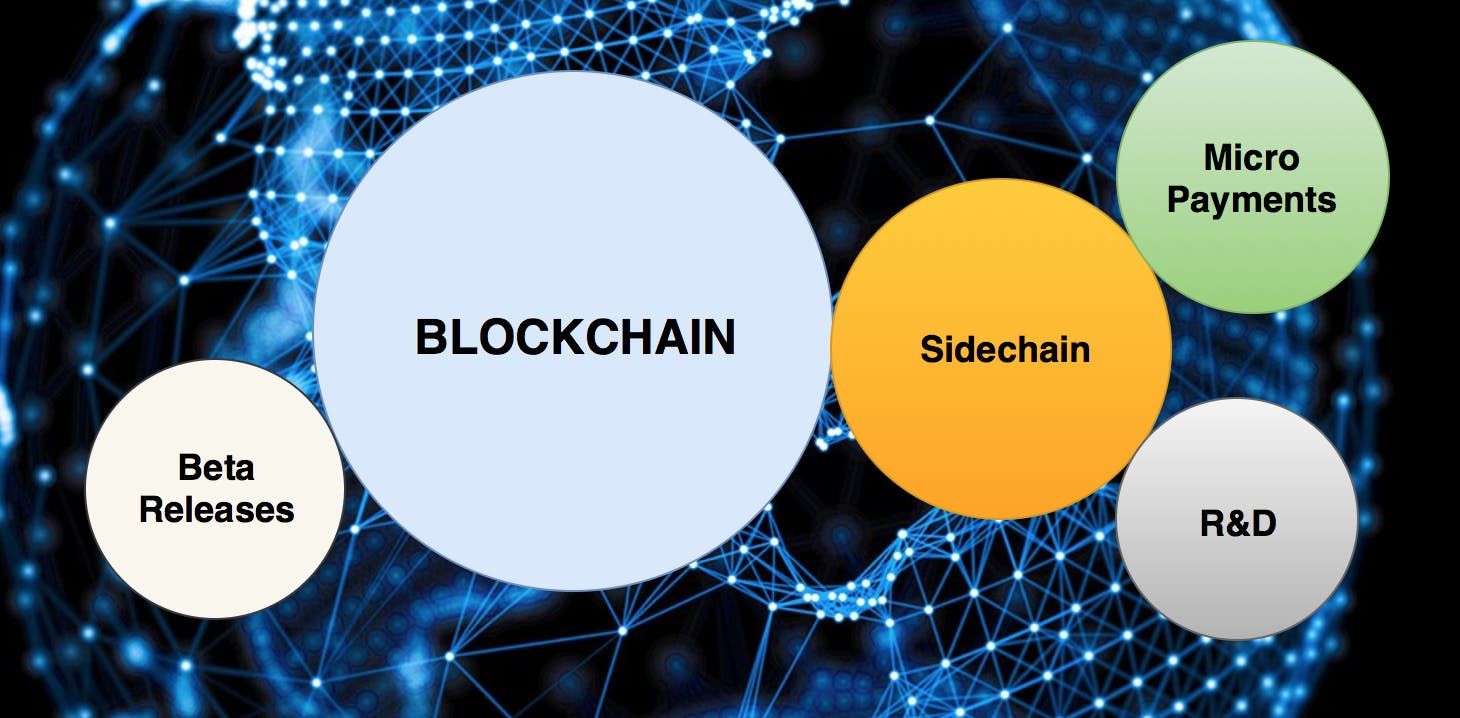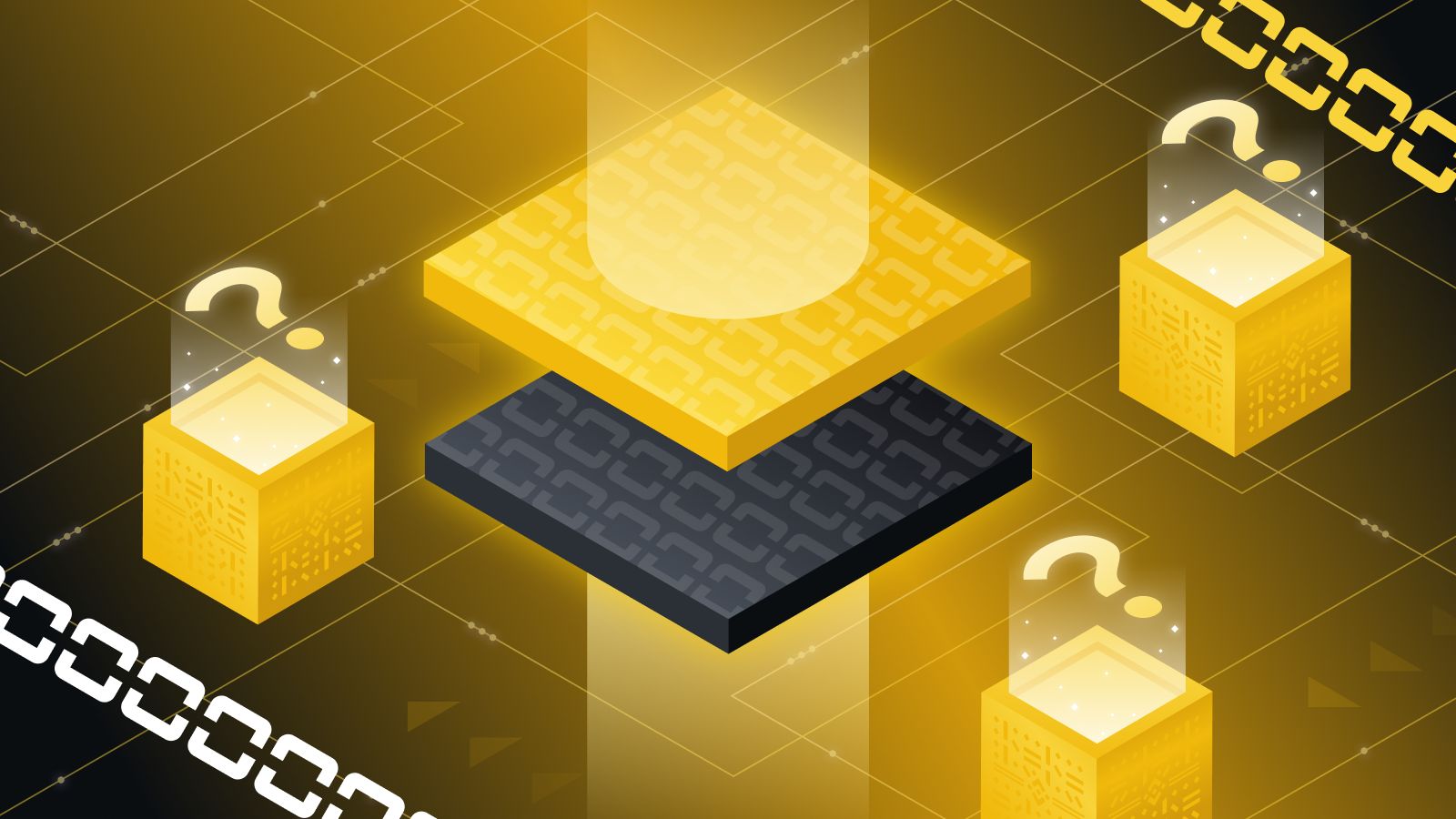Introduction
A sidechain is a fundamental concept in blockchain technology that allows for the creation of separate, interconnected blockchains. It offers a solution to some of the scalability and functionality limitations of a single blockchain network. By utilizing sidechains, developers can experiment with new features and applications without compromising the security and stability of the main blockchain.
The concept of sidechains was introduced to address the issue of scalability in traditional blockchain networks. As the popularity and usage of blockchain technology continues to grow, the limitations of a single chain become more pronounced. Transactions become slower, fees increase, and the overall efficiency of the network decreases. Sidechains provide a way to offload some of these transactions, reducing congestion and improving the overall performance of the blockchain ecosystem.
A sidechain operates as an independent blockchain that is connected to the main blockchain through a two-way peg. This pegging mechanism ensures that assets can be transferred between the main chain and the sidechain in a secure and transparent manner. It allows users to move their tokens or assets from the main chain to the sidechain and vice versa, enabling new functionalities and use cases.
One of the significant benefits of sidechains is their ability to enable the development of specialized applications or protocols. Developers can create sidechains that are optimized for specific purposes, such as faster transaction times, privacy enhancements, or the integration of smart contracts. This level of customization allows for greater flexibility and innovation within the blockchain ecosystem.
Furthermore, sidechains can serve as a testing ground for new features and improvements before they are implemented on the main chain. This ability to experiment and iterate on a sidechain before deploying changes to the main blockchain enhances the overall security and stability of the network. It reduces the risk of bugs or vulnerabilities in the main chain and ensures a smoother transition for upgrades.
Overall, sidechains provide a scalable and versatile solution to the limitations of a single blockchain network. By offering the ability to create interconnected, specialized blockchains, sidechains empower developers to innovate and design applications that cater to specific needs. With their potential to enhance scalability, functionality, and security, sidechains have become a crucial component in advancing the capabilities of blockchain technology.
What Is a Sidechain?
A sidechain is a parallel chain that operates alongside the main blockchain network, allowing for the transfer of assets between the two chains. It acts as an extension of the main chain, offering additional functionalities while maintaining interoperability. The concept of sidechains was introduced to address scalability and versatility limitations in traditional blockchain architectures.
In a sidechain, users can transfer their assets or tokens from the main blockchain to the sidechain, where they can be used for specific purposes or applications. This transfer is facilitated by a two-way pegging mechanism, which ensures the validity and security of the transactions. The pegging mechanism ensures that assets can be moved from the main chain to the sidechain and back without any risk of double-spending or fraud.
Sidechains operate independently but are interconnected with the main blockchain. This means that any changes or activity on the sidechain are recorded and verified by the main chain. This interconnectivity ensures transparency and allows for the seamless movement of assets between the two chains.
One of the key benefits of sidechains is their ability to introduce new features and functionalities without affecting the stability and security of the main blockchain. Developers can experiment with innovative ideas and technologies on a sidechain, testing their viability and potential impact on the overall blockchain ecosystem.
Sidechains also address the issue of scalability. By enabling certain types of transactions to be conducted on a separate chain, the main blockchain network can operate more efficiently. Sidechains provide a solution to the problem of congestion and slow transaction speeds that can occur when a single blockchain network becomes overloaded.
Moreover, sidechains can be customized to cater to specific needs or requirements. For example, a sidechain may be optimized for handling privacy-sensitive transactions, or it may incorporate advanced smart contract capabilities. With sidechains, developers have the freedom to design and implement specialized solutions that are tailored to particular use cases.
In summary, sidechains are parallel chains that operate alongside the main blockchain network, facilitating the transfer of assets between the two chains. They provide scalability, versatility, and customization options for developers, allowing them to experiment and innovate without compromising the integrity of the main blockchain. Sidechains are a powerful tool that enhances the capabilities and potential applications of blockchain technology.
How Does Sidechain Work?
Sidechains work by introducing a parallel blockchain network that operates alongside the main blockchain. They enable the transfer of assets or tokens between the main chain and the sidechain, allowing for the development of specialized functionalities and applications.
The foundation of sidechain technology lies in a two-way pegging mechanism. This mechanism ensures that assets can move between the main chain and the sidechain in a secure and transparent manner. When a user wants to move their assets from the main chain to the sidechain, they initiate a pegging process. The pegging process locks the assets on the main chain, making them unavailable for use, and simultaneously mints equivalent assets on the sidechain.
Once the assets are on the sidechain, they can be utilized for specific purposes, such as faster transactions, enhanced privacy, or the execution of smart contracts. Users can interact with the sidechain, conduct transactions, and take advantage of the specialized features it offers. If the user wishes to move their assets back to the main chain, they can do so by initiating an unpegging process. This process burns the assets on the sidechain and unlocks an equivalent amount of assets on the main chain, making them accessible again.
The two-way pegging mechanism ensures the integrity and security of the transfer process. It prevents any fraudulent activities, such as double-spending, by ensuring that the assets on both chains are in sync. The pegging and unpegging processes are verifiable and transparent, allowing users to track and verify their asset movements.
Another important component of sidechain technology is the interoperability between the main chain and the sidechain. The sidechain is connected to the main chain through a set of rules and protocols that facilitate communication and asset transfer between the two chains. This interoperability ensures that any changes or activities on the sidechain are recorded and verified by the main chain, maintaining a consistent and secure network.
Overall, sidechains work by establishing a parallel blockchain network and implementing a two-way pegging mechanism to facilitate the seamless transfer of assets between the main chain and the sidechain. This technology enables the development of specialized functionalities and applications while maintaining interoperability and security.
Benefits of Sidechain
Sidechains bring several significant benefits to the world of blockchain technology. Let’s explore some of the key advantages they offer:
Scalability: One of the major benefits of sidechains is their ability to enhance scalability. By enabling certain types of transactions to be conducted on separate chains, sidechains alleviate congestion and reduce the burden on the main blockchain network. This improves transaction speeds and overall network efficiency, allowing for a greater volume of transactions to be processed.
Customization: Sidechains provide developers with the flexibility to create specialized chains optimized for specific use cases. This customization allows for the implementation of features and functionalities that cater to particular needs. For example, a sidechain can be designed to prioritize privacy, implement advanced smart contracts, or enable faster transaction confirmations. This level of customization empowers developers to tailor blockchain solutions to specific industries or applications.
Innovation and Experimentation: Sidechains serve as a testing ground for new ideas and innovations. Developers can experiment with different protocols, features, and upgrades on a sidechain before implementing them on the main chain. This allows for thorough testing, bug fixing, and iteration, reducing the risk of disruptions or vulnerabilities in the main chain. Sidechains foster an environment of continuous innovation and improvement within the blockchain ecosystem.
Interoperability: Sidechains operate in conjunction with the main blockchain network, ensuring interoperability between the two. This means that assets can be moved seamlessly between the main chain and the sidechain, maintaining the overall integrity and consistency of the blockchain ecosystem. Interoperability enables the utilization of specialized features offered by the sidechain while enjoying the security and stability of the main chain.
Enhanced Privacy: Sidechains can be implemented with privacy-enhancing features that provide increased confidentiality for transactions. For instance, a sidechain can utilize advanced cryptographic techniques to protect the privacy of sensitive data or shield the identities of participants. This enhancement in privacy enables users to have more control over their personal information, appealing to industries and applications that require heightened data protection.
Expanded Use Cases: Sidechains broaden the range of possible use cases for blockchain technology. Different industries and applications may require specific functionalities and features that are not readily available on a single blockchain network. Sidechains allow for the creation of dedicated chains tailored to those particular use cases, unlocking the potential for innovative solutions in various fields, including finance, supply chain management, healthcare, and more.
In summary, sidechains offer scalability, customization, innovation, interoperability, enhanced privacy, and expanded use case possibilities. These benefits drive the adoption and development of sidechain technology, shaping the future of blockchain by addressing its limitations and providing new opportunities for growth and innovation.
Use Cases of Sidechain
Sidechains offer a wide range of use cases across different industries and applications. Let’s explore some of the prominent use cases where sidechain technology can bring significant benefits:
Financial Services: Sidechains can revolutionize the financial sector by improving transaction speed, scalability, and privacy. They can be used for faster and more efficient cross-border payments, asset tokenization, and decentralized exchanges. Sidechains can also enable the implementation of additional financial services such as lending, decentralized finance (DeFi) applications, and stablecoin issuance with enhanced privacy and security.
Supply Chain Management: Sidechains can be applied in supply chain management to enhance transparency, traceability, and security. Through the use of sidechains, businesses can create a decentralized ledger for tracking and verifying the movement of goods, ensuring authenticity, reducing fraud, and improving the overall efficiency of supply chains. Sidechains can also enable seamless integration of smart contracts, facilitating automated processes and increasing efficiency.
Healthcare: Sidechains can play a vital role in the healthcare industry by improving data security, interoperability, and collaboration. They can provide a decentralized and secure platform for managing electronic health records (EHRs), ensuring data privacy and accuracy. Sidechains can also facilitate the secure sharing of medical research and enable faster and more secure healthcare transactions, such as insurance claims processing or prescription drug tracking.
Gaming: Sidechains offer exciting possibilities for the gaming industry. They can be used to create decentralized gaming platforms that allow for secure and transparent in-game transactions, digital asset ownership, and provable fairness in online games. Sidechains can also enable the creation of unique gaming experiences, such as virtual reality worlds, where players can buy, sell, and trade virtual assets in a secure and efficient manner.
IoT (Internet of Things): The integration of sidechains with IoT devices can enhance data integrity, security, and scalability. Sidechains can enable secure communication and data transactions between IoT devices, ensuring the integrity and privacy of the collected data. They can also facilitate the creation of smart contracts for automated IoT device interactions, enabling seamless and secure machine-to-machine transactions.
Decentralized Identity: Sidechains can be utilized to develop decentralized identity solutions, providing users with control over their digital identities and personal data. Sidechains can enable the creation of self-sovereign digital identities that are secure, verifiable, and privacy-preserving. This can have applications in areas such as digital voting, access control, and identity verification in various industries.
These are just a few examples of the numerous use cases where sidechains can bring notable benefits. The versatility and customization options offered by sidechains provide organizations and developers with the ability to explore and create innovative solutions in their respective industries. As sidechain technology advances, we can expect to see even more impactful and transformative use cases emerge.
Challenges and Limitations of Sidechain
While sidechains offer numerous advantages, there are also a few challenges and limitations associated with their implementation. It’s important to consider these factors when exploring the use of sidechains:
Security: One of the primary concerns with sidechains is ensuring the security of assets and transactions. In a sidechain ecosystem, there is a reliance on the two-way pegging mechanism to transfer assets between the main chain and the sidechain. Any vulnerabilities in this mechanism can potentially compromise the security and integrity of the entire system. Robust security measures and auditing processes are crucial to mitigate these risks.
Interoperability: Achieving seamless interoperability between the main chain and sidechains can be a complex task. Ensuring that changes and activities in the sidechain are accurately recorded and reflected in the main chain requires careful coordination and consensus mechanisms. Developing effective interoperability protocols and standards is an ongoing challenge for the adoption and scalability of sidechain technology.
Centralization: Sidechains introduce the potential for centralization, depending on the governance structure and design choices. The control and management of sidechains can be concentrated in the hands of a select few, which may contradict the principles of decentralization that blockchain technology aims to achieve. Striking a balance between customization and maintaining a decentralized network is a challenge that needs to be addressed when implementing sidechains.
Complexity: Introducing sidechains adds complexity to the overall blockchain ecosystem. Managing multiple chains, ensuring their synchronization, and coordinating transactions between the main chain and sidechains requires additional technical expertise and resources. This complexity can hinder the adoption and understanding of sidechain technology, especially for organizations that are new to blockchain.
Regulatory Challenges: Sidechains can raise regulatory concerns, especially in cases where assets from the main chain are moved to sidechains and back. Compliance with existing financial and securities regulations can be a complex task, as the movement of assets can introduce additional complexities and regulatory requirements. Ensuring that sidechains adhere to relevant legal frameworks is crucial to maintain trust and engagement from regulatory bodies.
Economic Model: Designing a sustainable economic model for sidechains can be a challenge. The incentives for network participants, the management of transaction fees, and the governance of assets within sidechains require careful consideration. Ensuring that sidechain ecosystems are economically viable and sustainable is essential for long-term success.
It is important to acknowledge these challenges and limitations while exploring the potential of sidechains. Overcoming these hurdles will require continuous research, innovation, and collaboration across the blockchain community. As technology advances and best practices evolve, many of these challenges can be addressed, paving the way for more robust and scalable sidechain solutions.
Conclusion
Sidechains are a powerful innovation in the world of blockchain technology. They offer solutions to scalability, customization, and interoperability limitations that can arise in a single blockchain network. By introducing parallel chains that operate alongside the main blockchain, sidechains enable the transfer of assets and the development of specialized functionalities and applications.
Throughout this article, we have explored the definition and workings of sidechains. We have seen how they provide scalability by offloading certain types of transactions to separate chains, as well as how they allow for customization and innovation by creating specialized chains optimized for specific use cases.
The benefits of sidechains extend to various industries and applications. Their use cases span from financial services, supply chain management, and healthcare to gaming, Internet of Things (IoT), and decentralized identity. Sidechains offer improved transaction speeds, enhanced privacy, and expanded possibilities for organizations and developers to leverage blockchain technology.
However, it is important to acknowledge the challenges and limitations that come with sidechains. Security, interoperability, centralization, complexity, regulatory concerns, and economic sustainability are all factors that need to be carefully addressed when implementing sidechain solutions.
As technology progresses, it is expected that these challenges will be met with ongoing research, innovation, and collaboration within the blockchain community. Overcoming these hurdles will pave the way for more robust, scalable, and widely adopted sidechain solutions.
In conclusion, sidechains are a valuable addition to the blockchain ecosystem. They offer scalability, customization, and interoperability, enabling the development of specialized applications and addressing the limitations of traditional single-chain networks. As sidechain technology continues to evolve, we can anticipate even greater advancements and implementations across various industries, contributing to the widespread adoption and growth of blockchain technology as a whole.

























